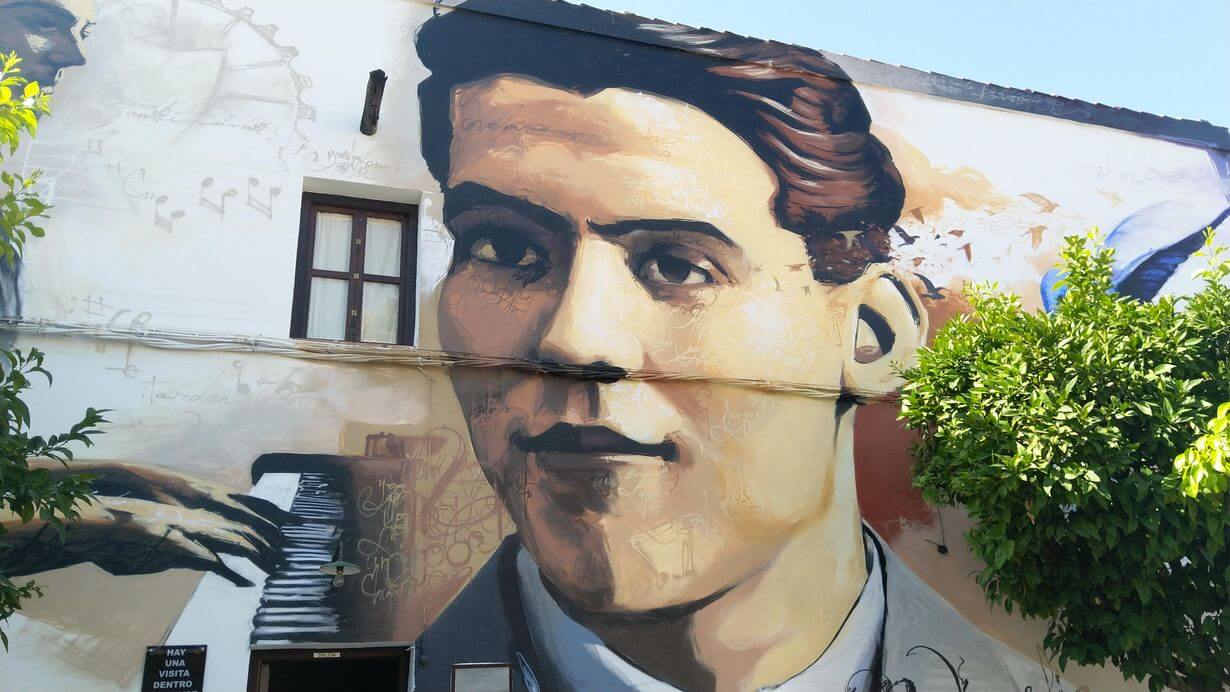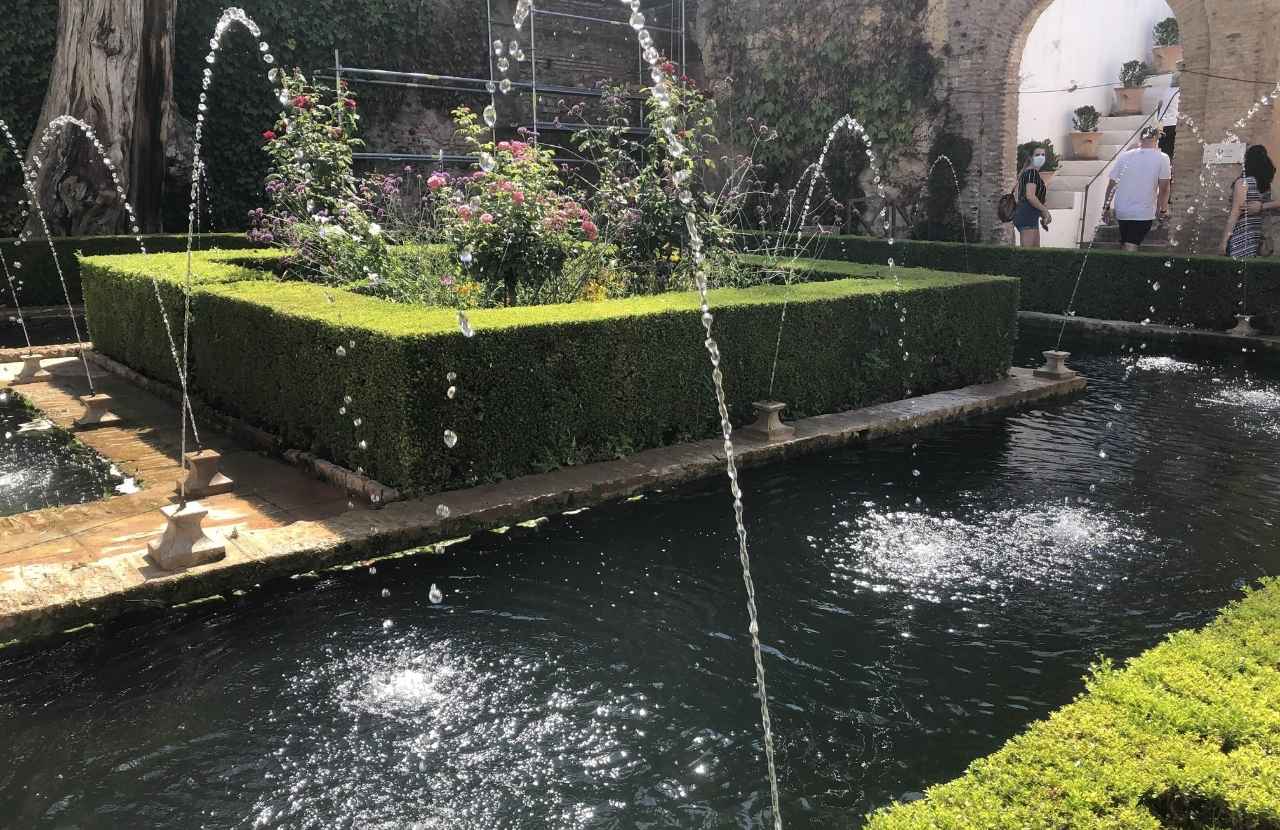Welcome to the basic information about cookies on the website owned by CICERONE CULTURA Y OCIO SL (Cicerone Granada). A cookie is a small piece of information that is stored on your computer, smartphone, or tablet each time you visit our website. Some cookies are ours, while others belong to external companies that provide services for our website. Cookies can be of various types: necessary cookies are technical cookies that allow our website to function and do not require your authorization; they are the only ones activated by default. These cookies do not store any personal information. The rest of the cookies are used to improve our website, customize it based on your preferences, or track anonymous information about website visitors. You can accept all these cookies by clicking the ENABLE ALL button or configure and reject their use by clicking DISABLE under the ANALYTICS section. Then, click SAVE. If you want more information, please check our website's COOKIE POLICY.
Virtual masterclasses for students
This is an innovative educational resource that uses the advantages of digital technology to provide a streaming educational experience in the classroom. Thanks to different tools and digital support materials like videos, photos, music or 3D reconstructions, these innovative virtual sessions are 100% interactive and tailored and offer a lively, profound and attractive narration.
They are designed both for private connections of students at home in a non-classroom educational model, and for connections with the classroom if the class has the infrastructure for screen projections in a hybrid educational model.
All these pedagogical masterclasses have been programmed so that they can be integrated into the school curriculum of the secondary and high school education cycles.
We propose a broad, comprehensive and flexible itinerary that can be adapted to the level of each group, thus being a perfect complementary activity to the ordinary classes.
“Life of Federico García Lorca” virtual tour

It is a wonderful journey through time that, taking us from his hometown to New York and Buenos Aires, reveals the most universal Andalusian poet, the people who marked and inspired him the most. We will see how he lived his life, how he developed as an artist and the importance of his work and himself today.
We will virtually visit places such as the family home in Valderrubio, the Artistic, Literary and Scientific Centre in Granada, the Student Residence in Madrid, Cadaqués, Havana, the place where he was arrested and, of course, the Federico García Lorca Centre, among others.
This virtual pedagogical tour for students turns Federico García Lorca into an educational resource to pass on the value of the artist and his importance in the Spanish literature of the 21st century, to understand the social context of his historical moment and to interpret his most relevant works.
Teaching goals of the “Life of Federico García Lorca” virtual session
- To discover more deeply the figure of Federico García Lorca and his life, in order to understand his works.
- To bring students closer to the historical and social context of the early 20th century.
- To strengthen reading habits among students.
- To expand the knowledge previously acquired about the so-called “Generation of 27”.
- To comment on some aspects of the avant-garde movements.
- To recognise the importance of Federico García Lorca and Manuel de Falla in the transmission of traditional music.
- To encourage respect, creativity and participation.
- To promote empathy and assertiveness through knowledge of the life and work of Federico García Lorca.
- To provide tools and resources to organise their own learning and their own work.
Virtual Masterclass “The Water of the Alhambra”
In this virtual masterclass we will try to impress on the student the value of the heritage of the Alhambra through the important and unique water supply system incredibly preserved even today, in what was one of the most important medieval cities from the thirteenth to the fifteenth century.
We invite students to take a virtual tour along the hydraulic system that supplies the Alhambra with the help of the technological tools we have at our disposal. The explanations of our expert on the subject will transmit the knowledge with ease and great dynamism.
We will cover several thematic blocks that include the socio-cultural context of the Nasrid period, water and agriculture, the entrance of water to the Alhambra through the royal irrigation channel and its ramifications and the urban planning around it, among others.
To do this we will use interesting digital tools such as videos, maps and platforms that allow us to explore and share ideas on a blank canvas, we create a network of “intelligent structures” that manage to capture the attention of students thanks to its attractive visual effects and zooms.
We assure you that your classes will gain in innovation and dynamism, do you want to know more?
Pedagogical objectives of the virtual session “The water of the Alhambra”
- To bring students closer to the socio-cultural context of the Alhambra in its Nasrid period (12th to 15th centuries).
- To understand the importance of the Alhambra in relation to the world of its time.
- Identify the type of constructions related to the water of the Alhambra, the baths, cisterns, latrines as well as their operation and material.
- Recognize the importance of the hydraulic system of the monumental complex of the Alhambra and know its basic operation.
- To appreciate the development of agriculture and herbology in the Alhambra and Granada in the Middle Ages.
- To orient themselves in the complex, both in relation to its structure and in the geographical space.
- To promote the use of digital tools.
- Distinguish the usefulness of the different enclosures of the monumental complex, residential areas, defensive structures and the walled city.
- To value and stimulate the importance of historical heritage as a form of positive social behavior and to acquire critical awareness of its conservation problems.
Live Tour in Granada. “A live historical tour
In this real-time virtual tour, a historical journey is made through the eyes of our guide, who will use a mobile technological device to introduce students to the historical context of Granada, its streets and monuments.
An opportunity to explore Hispano-Muslim culture and architecture without having to use transportation, in a safe, original and dynamic way. We invite students to enter and understand the cultural richness of our city, giving the opportunity to stop at the places of greatest architectural and patrimonial interest.
We will begin our virtual exploration from the Plaza Isabel La Católica to the Corral del Carbón passing by the Town Hall until we enter the historic center where we will explain in detail the characteristics of the buildings of the historic center, reviewing their artistic styles: the Cathedral of Granada and its Renaissance and Baroque or the Royal Chapel and its late Gothic or Elizabethan.
Next, we will visit the Alcaicería, the old Arab silk market of Granada, on our way to the Madraza, the first university of Granada, inaugurated in the 14th century by the Nasrid King Yusuf I.
In the final part of the visit we will visit Plaza Nueva and the Real Chancillería, the Casa de Castril and finally we will say goodbye in the Carrera del Darro, also known as “Paseo de los Tristes”, so that students complete their learning in a dynamic way in a pedagogical visit where they will have the feeling of having been walking through the streets of Granada.
Pedagogical objectives of the Live tour in Granada ”A historical tour” in live
- To bring students closer to the socio-cultural context of Granada from its Arab origins to the Christian conquest in 1492 onwards.
- To understand the importance and historical value of the city’s monuments in order to understand its history.
- Identify the architectural style of monuments and historic buildings, knowing the initial reason for their construction and their current functionality.
- Appreciate the development of Granada as an important kingdom in the Middle Ages until its conversion to Christianity and subsequent development as a world power during the reign of Queen
- Isabella and Ferdinand.
- To orient themselves in the urban ensemble, both in relation to its structure and geographic space.
- Encourage the use of digital tools.
- To value and stimulate the importance of historical heritage as a form of positive social behavior and to acquire critical awareness about its conservation and continuous transformation.
To bring the contents closer to the students we will use the following digital resources:
- Videoconference. The platform may be the one proposed by the Educational Center or, failing that, it will be Zoom.
- The Google Earth application shared from our screen.
- Videos and photos that help to contextualize the contents.
- Interactive quiz through which the students will be able to evaluate themselves.
Duration
45 minutes masterclass and 15 minutes for questions and answers
Price
For more information and quotations, please fill out the form below
More information
You may contact us at contact@ciceronegranada.com
Cancellation policy
There will be a total refund if cancellation is requested 48 hours before the experience or earlier. No refund will be applicable if cancellation is requested later.


